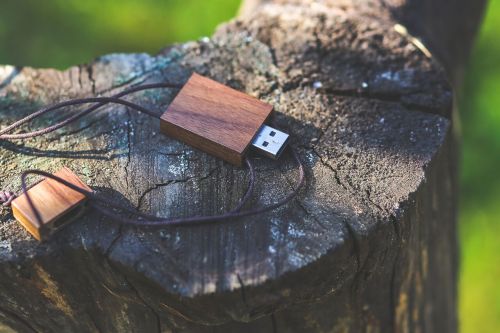Culture | September 5th, 2018

USB charging ports in public places are convenient but possibly risky. Data is transferable over a USB connection, so plugging your phone into an unknown charging port puts it at risk.
Let’s be realistic: You probably shouldn’t be too paranoid about these attacks. I haven’t seen widespread reports of charging ports causing problems. However, many POSSIBLE attacks could happen over a USB port, and avoiding the risk is easy enough that it won’t inconvenience you. Notice that I said POSSIBLE attacks. As of now there haven’t been too many. I predict they will increase however.
The main problem is that USB doesn’t just transmit power—it sends data. That’s why you can plug your phone into your computer to transfer files back and forth, update the phone’s operating system, and back up its contents.
A correctly behaving USB charging port wouldn’t even try to access your phone’s data. But there’s nothing stopping it from trying after you plug in a USB cable. A charging port could try to access private data on your phone or exploit a security vulnerability and run dangerous code on your device. This type of attack is known as “juice jacking.” While older phones just made your photos and other data accessible whenever you plugged in a cable, current iPhones and Android phones usually require your permission to share things. Your iPhone will prompt you to “Trust This Computer” when a device you’re plugged into wants access. On Android, you must enable transferring files over the connection.
Even if you have USB debugging enabled, you must permit the device to access it. If you don’t give your phone those permissions, it will still allow charging over the port but not allow data transfer. With an iPhone, you’re probably safe unless the charger attacks your phone through an unknown security hole. Of course, Apple just added “USB Restricted Mode” to the iPhone and iPad to prevent them from being attacked by password-cracking tools connected to the Lightning data port. If you have an Android phone, there are bigger risks. Most Android phones run outdated operating systems, which could easily have unpatched security holes that could be attacked through a USB port. They could be attacked in other ways, too. Many current Android devices from eight different manufacturers including Samsung, LG, and HTC are vulnerable to AT commands be sent over a USB cable. You’re safest if you have a Google Pixel device that’s up-to-date, but even that could theoretically be attacked.
One Solution:If you must charge from a USB charging port and you’re concerned about the risks, you can purchase a cheap USB charge-only adapter. An inexpensive Plugable USB charge-only adapter ($6.41) will solve the problem. It’s a little dongle you plug into a USB port before you connect your phone’s charging cable. The data pins are disconnected in the dongle so that only power can be transferred over the connection. This type of device has also been called a “USB condom” in the past.
Use your own charger! In some cases, public charging stations may provide both a standard AC power outlet and USB charging ports. For both safety and maximum charging speed, skip the USB charging ports. Plug your phone’s standard charger directly into the AC outlet and charge from there. Make sure you take your charger where ever you take your laptop or phone. A little discipline is all it takes!There’s no risk of data connection happening over the power outlet—even if network traffic is being transmitted over the electrical wiring. You’re safe as long as you plug in a trusted charger. Rather than hunting down USB charging outlets, you may want to skip them entirely and get a portable battery for your smart phone. Just plug the phone into the battery to charge it whenever you like, even when you’re away from a power outlet. When you find an AC outlet, you can just plug your battery into the outlet to recharge it. You can also do both at once—plug the battery into the outlet and the phone into the battery. You’ll be charging both your battery and phone at the same time, and it’s safe. The only risk is when connecting your phone directly to a USB port.
In the future, widespread wireless charging may eliminate the risk of sketchy USB ports. You can charge your phone at any public wireless charging spot without worrying.
December 18th 2025
October 20th 2025
October 15th 2025
September 16th 2025
July 29th 2025
_(1)__293px-wide.jpg)
__293px-wide.jpg)

__293px-wide.jpg)
_(1)_(1)_(1)__293px-wide.jpg)
_(1)__293px-wide.jpg)